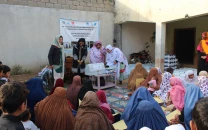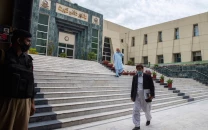Manchhar Lake needs freshening up, say experts

The industrial and domestic water technologist said at a news conference at the Hyderabad Press Club on Thursday that efforts to rehabilitate Asia’s largest freshwater lake must be made. The lake has been ruined by an inflow of brackish and toxic water from various drains.
He said that at least four treatment plants should be installed to improve the condition of the lake. According to the doctor, he was able to improve the situation somewhat in 2009 when he was aided by the Hyderabad district government.
His research team set up a camp at Manchhar Lake in 2004. They took samples of blood, hair and nails of 300 men, women and children who were living nearby and discovered that many of them were ill due to infections caught from the lake water.
“Our research showed that the water has become a health hazard,” said Dr Siddiqui. He had set up a laboratory in Sehwan town where water analysis was carried out regularly, with all expenses paid by the district government.
The high court also took notice of the lake’s deteriorating condition in 2006 and ordered that steps be taken for its rehabilitation. After this the Hyderabad Development Authority, Irrigation department and DCO Hyderabad released 700 cusecs of fresh water from River Indus to Manchhar Lake.
The engineer lamented the flow of sewage from the MNV drain into the lake and appealed to the government to make amends.
If more water is released into the lake and the toxins removed, the lake can be restored to its original condition. Marine life would flourish along with employment and tourism.
Published in The Express Tribune, July 30th, 2010.



















COMMENTS
Comments are moderated and generally will be posted if they are on-topic and not abusive.
For more information, please see our Comments FAQ